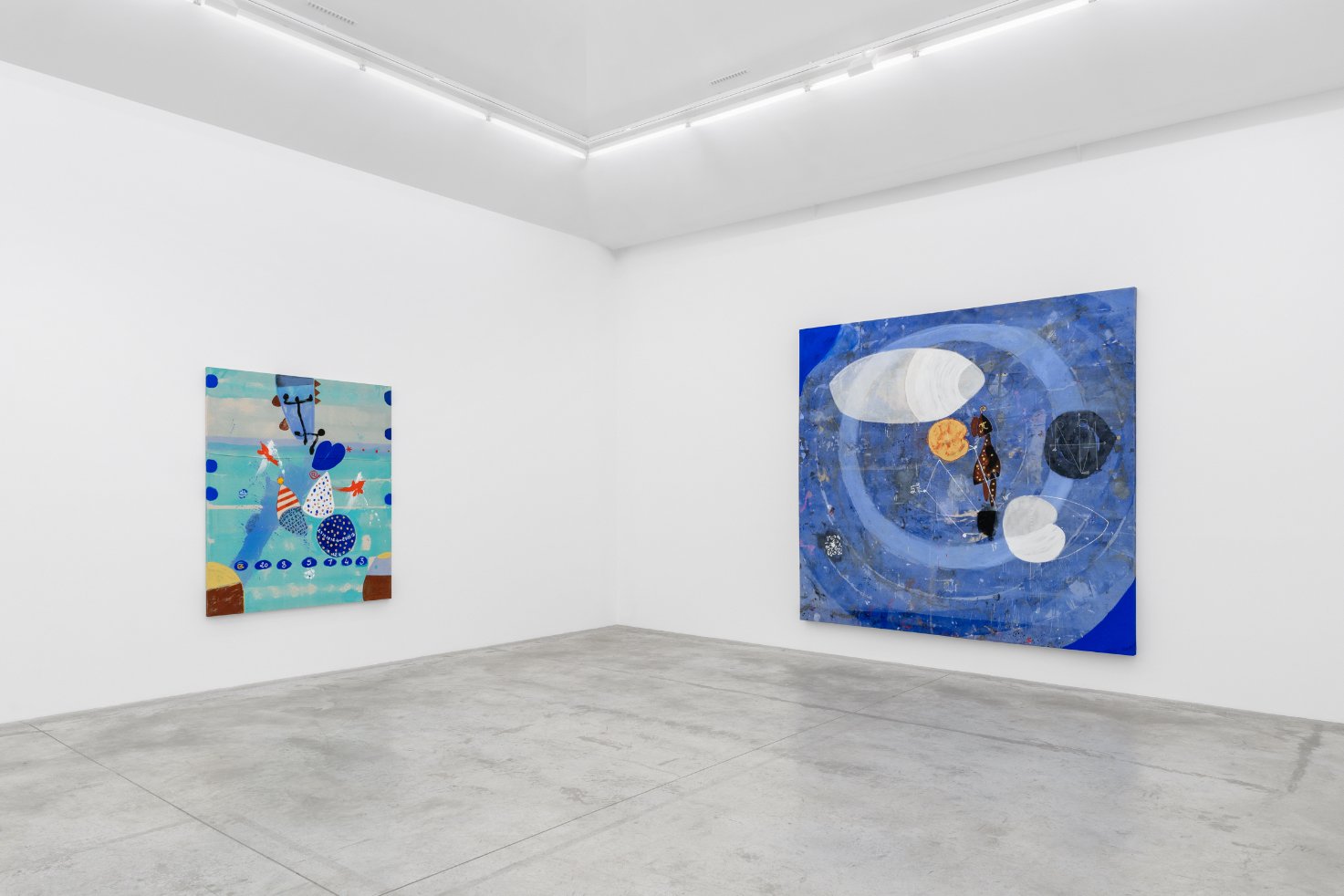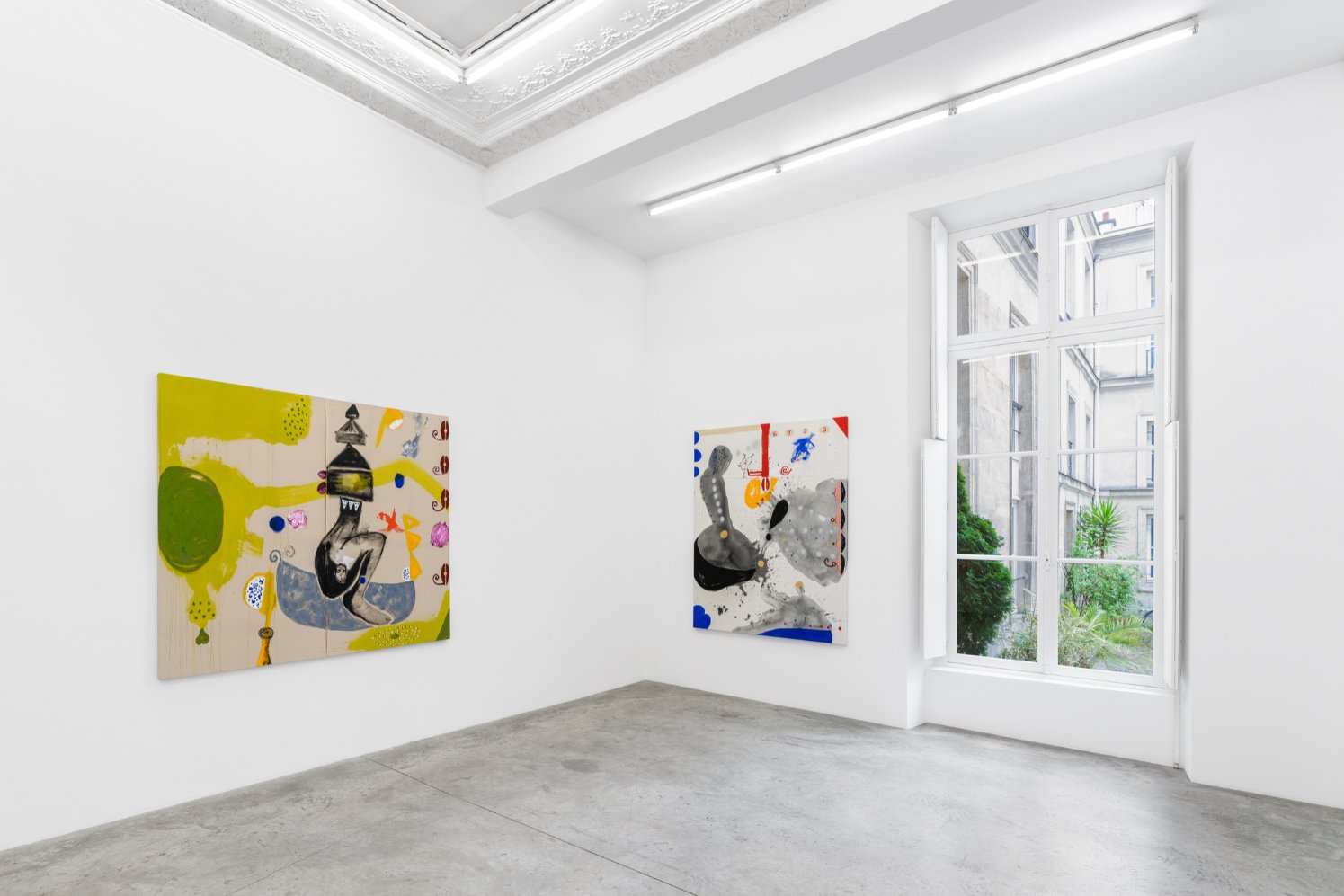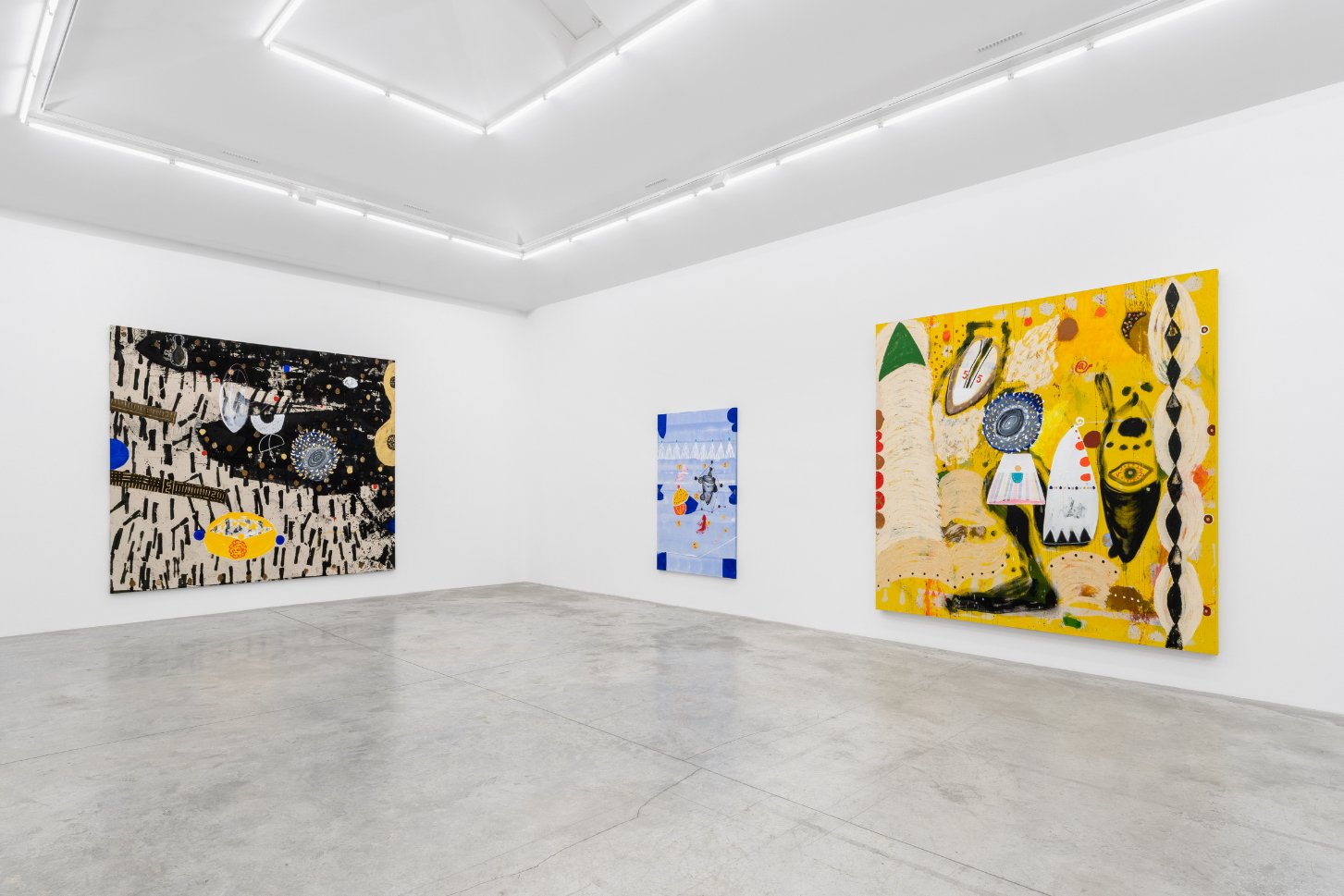Through the iconography he conjures, Watts points to interconnected histories and heritages, overlaying systems of signs and finding corelations. From an early interest in ancient Egyptian and Greek history, as well as in classical West African knowledge systems across Dogon, Bambara, Senufo, Baule, Yoruba and Dan cultures, amongst others, he began to explore what is held in common at the intersections of situated worlds and knowledges, as well as to reactivate and make visible effaced cultural constellations. It was to Watt’s knowledge of West African spiritual traditions that Jean-Michel Basquiat was particularly attracted when they met in Paris in 1988. Basquiat had visited Korhogo district in the north of Cote d’Ivoire from where Watts’ family originated, and where he had travelled often as a child and been initiated into Senufo spiritual practice. Basquiat was very interested in exploring these sacred traditions and their relationship to Vaudoo in Haiti, planning a trip to Cote d’Ivoire together with Watts in 1989 but passing away before.
During his years in France, Watts delved into the influence of West African sculptural traditions on European modernist artists, particularly Brancusi, Picasso, Modigliani and the Surrealists. In his works, images appear again and again that relate to these investigations, joined from the 2000s, by mathematical symbols and equations, references to science and technology, as well as to Sufism and other spiritual and esoteric forms, elements of Amharic and Aramaic script, Egyptian hieroglyphs, Bambara, Arabic.
Ouattara in Paris is on view through July 29 at Almine Rech 64 rue de Turenne.



